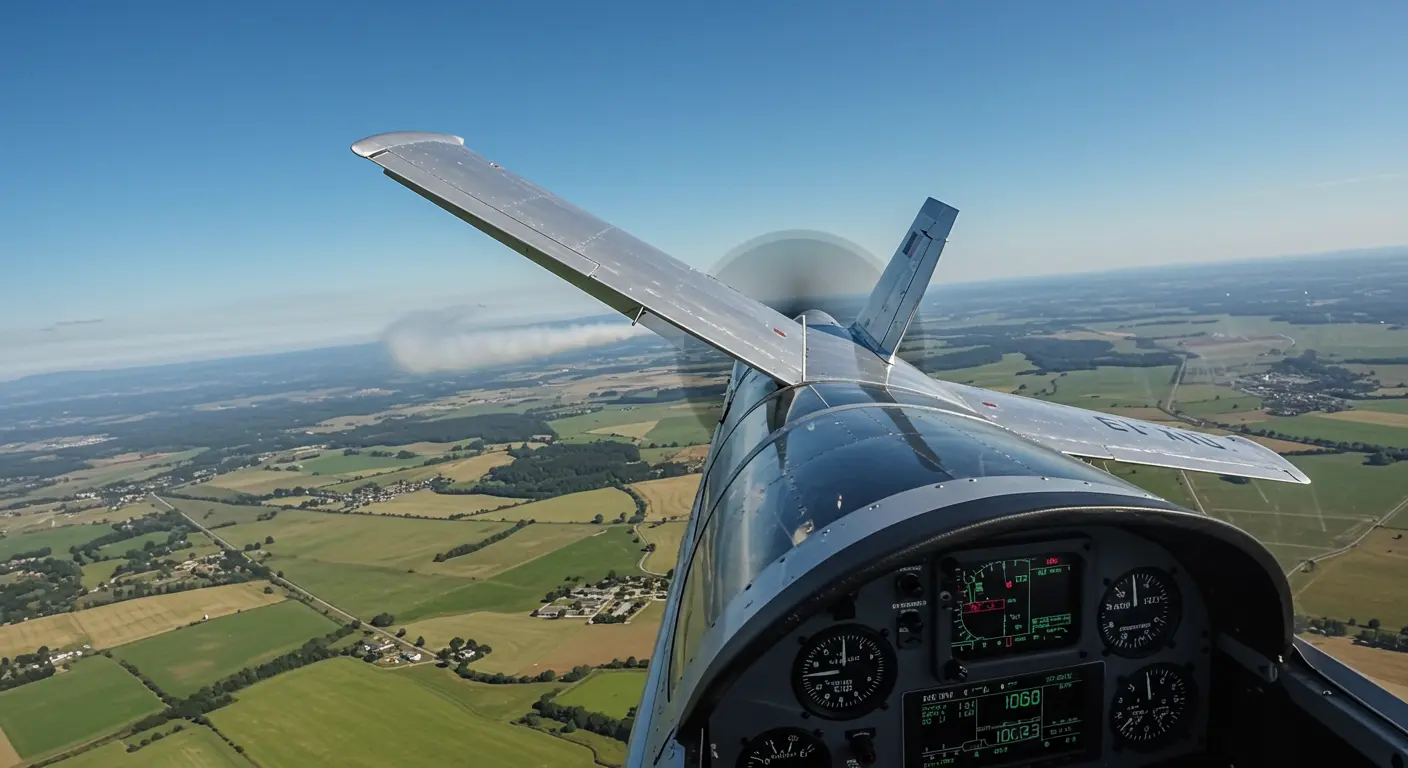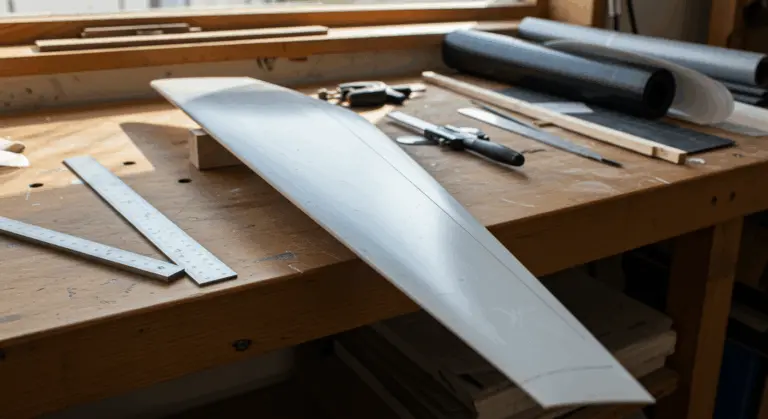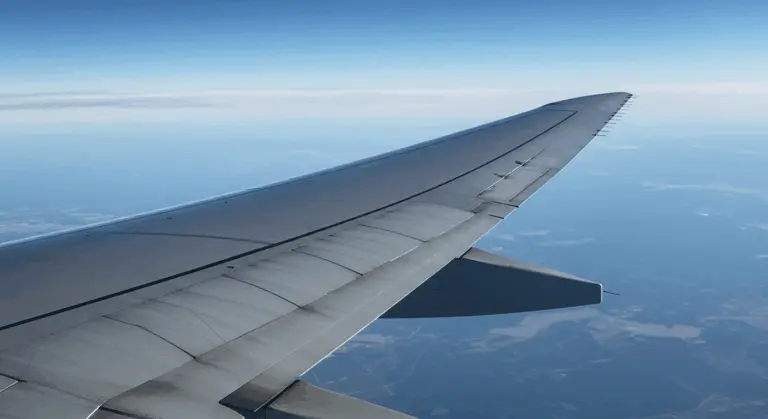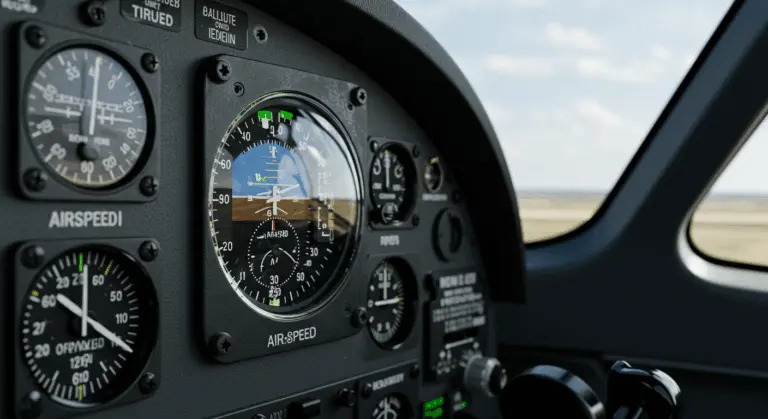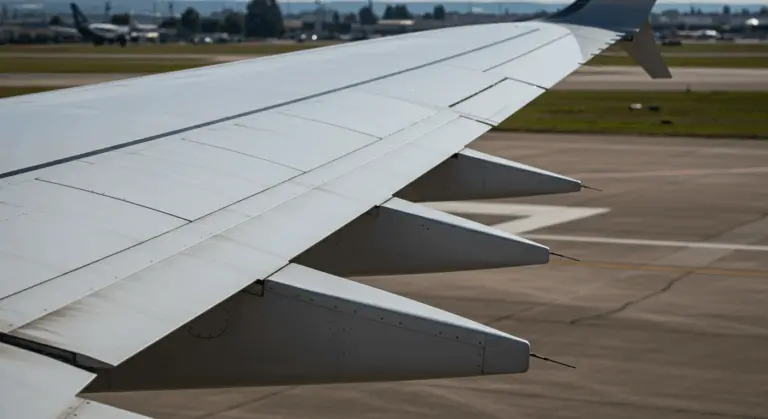Understanding the Horizontal Component of Lift in Aviation
What is the Horizontal Component of Lift?
In aviation, the total lift force acts vertically upward to counteract gravity during straight and level flight. When an aircraft banks into a turn, this force tilts with the aircraft and divides into two components: a vertical component that continues to oppose gravity, and a horizontal component that serves an entirely different purpose.
This horizontal component becomes the centripetal force that pulls the aircraft through its turn, directing it toward the center of the circular path. Without it, an aircraft would fly in a straight line regardless of its bank angle.
The magnitude of this horizontal component grows in direct proportion to the bank angle. As a pilot steepens the bank, more of the total lift force gets redirected horizontally, amplifying the turning force. This simultaneously reduces the vertical component that keeps the aircraft aloft.
For a perfectly coordinated turn, the horizontal component of lift must precisely balance the centrifugal force trying to push the aircraft outward. If these forces are unbalanced, the aircraft will:
-
Slip: The horizontal lift is insufficient for the turn rate.
-
Skid: The horizontal lift is excessive for the turn rate.
The Role of Bank Angle in Lift Distribution
The vertical component of lift decreases as the cosine of the bank angle—a relationship with direct practical consequences. At a 45-degree bank, only about 70% of the total lift supports the aircraft’s weight, while the remaining 30% works horizontally to turn the aircraft.
These lift components obey precise trigonometric relationships: the horizontal component is proportional to the sine of the bank angle, while the vertical component is proportional to the cosine. This mathematical predictability enables pilots and flight management systems to calculate exactly how much additional lift is needed to maintain altitude during any coordinated turn.
How Bank Angle Influences Turn Dynamics
Bank angle serves as the pilot’s primary tool for controlling turn dynamics. Steepen the bank, and you increase the horizontal lift component, generating stronger centripetal force that creates a much tighter turning radius.
At shallow bank angles—say, 15 to 20 degrees—turns remain gentle with minimal altitude management required. As bank angles exceed 30 degrees, turn dynamics change significantly.
While steeper banks deliver faster turn rates and tighter radii, they come with a cost: increased load factor, or G-force. This load factor—calculated as the inverse of the cosine of the bank angle—reaches 2G at 60 degrees, affecting both the aircraft’s structural limits and its stall characteristics.
Stall speed climbs with the square root of the load factor—in that 60-degree bank generating 2G, stall speed jumps roughly 40% higher. This reduced margin to stall speed requires careful airspeed control, particularly when operating close to the ground.
Maintaining Altitude During Turns
To maintain altitude during a turn, pilots must compensate for the reduced vertical lift by increasing total lift production. This requires two key adjustments:
-
Increased back pressure: Applying back pressure on the control yoke increases the angle of attack.
-
Additional power: More power is needed to overcome the increased drag from the higher angle of attack and maintain airspeed.
Pilots typically employ two distinct techniques for this critical adjustment:
-
Continuous back pressure: Maintaining steady back pressure offers excellent tactile feedback, though it can prove fatiguing during extended maneuvers.
-
Re-trimming: Adjusting trim to a nose-up attitude before entering the turn significantly reduces required control force throughout the maneuver.
Practicing altitude control during turns becomes a crucial exercise in developing a pilot’s divided attention skills. This skill requires simultaneously monitoring flight instruments, outside visual references, and control inputs all at once. The proficiency standard for steep turns is typically maintaining altitude within ±100 feet of the target.
Altitude management becomes especially critical during low-altitude maneuvers—such as base-to-final turns—where every foot of altitude represents precious safety margin. With recovery options severely limited should a stall or spin develop, pilots must employ conservative bank angles and remain mentally prepared to execute a go-around.
Adverse Yaw and Its Effects on Turns
Adverse yaw represents the aircraft’s tendency to yaw opposite to the intended turn direction. This phenomenon stems from differential drag created by the ailerons: the downward-deflected aileron on the rising wing generates more lift—and more induced drag—than its upward-deflected counterpart on the descending wing.
The severity of adverse yaw varies significantly with aircraft design—long-winged aircraft typically exhibit more pronounced effects. Manufacturers use several design features to mitigate it:
-
Differential ailerons: The upward-moving aileron deflects more than the downward-moving one.
-
Frisé ailerons: The leading edge of the upward-moving aileron protrudes into the airflow, creating drag to counteract the yaw.
-
Interconnected controls: Aileron and rudder linkages are mechanically connected to automate coordination.
Pilots counter adverse yaw by applying rudder in the direction of the turn—a technique known as “stepping on the ball,” referencing the turn coordinator’s slip-skid indicator. This coordinated input is essential during slow flight and steep turns, where adverse yaw effects become more pronounced.
Factors Affecting the Horizontal Component of Lift
Multiple factors can significantly influence the horizontal component of lift and overall turn performance:
-
Weather Conditions: Turbulence, wind shear, and crosswinds can disrupt coordinated turns, while density altitude directly impacts the aircraft’s ability to generate lift.
-
Aircraft Weight and Balance: Improper loading or an out-of-limits center of gravity can significantly affect roll stability, potentially requiring asymmetric control inputs to maintain coordination.
-
Aerodynamic Design: Wing characteristics (e.g., aspect ratio, dihedral) and control surface design define an aircraft’s inherent turning performance.
-
Pilot Technique: A pilot’s ability to maintain coordination between ailerons and rudder is crucial for efficient and safe turns.
The Impact of Airspeed on Turn Radius
Airspeed directly affects turn radius—at any given bank angle, higher airspeed inevitably produces a wider turn. This relationship becomes critically important during approaches, traffic pattern work, and obstacle avoidance, where higher speeds require more maneuvering room.
This relationship connects three factors: airspeed, bank angle, and turn radius. Want to maintain the same turn radius at higher airspeed? The pilot must steepen the bank angle accordingly. Conversely, maintaining a constant bank angle while increasing airspeed will enlarge the turn radius.
Turn performance is measured by two key metrics:
-
Rate of Turn: The speed of the turn (in degrees per second), which increases with a steeper bank angle at a constant airspeed.
-
Radius of Turn: The size of the turn’s circular path, which increases with higher airspeed at a constant bank angle.
Careful speed management is essential for precision flying. For tight turns—whether during emergencies or precision instrument approaches—reducing airspeed enables pilots to tighten the turn radius without resorting to dangerously steep bank angles. This enhances safety and precision by ensuring the aircraft remains within protected airspace.
Conclusion: Mastering the Horizontal Component of Lift
Understanding and controlling the horizontal component of lift is fundamental to skilled piloting. It demands a thorough understanding of how bank angle, airspeed, and load factor interact in complex ways to control both turn rate and radius. Through skillful management of these forces, precise coordination of control inputs to neutralize adverse yaw, and thoughtful compensation for external factors, pilots can execute maneuvers that are simultaneously precise, safe, and efficient across all phases of flight.

